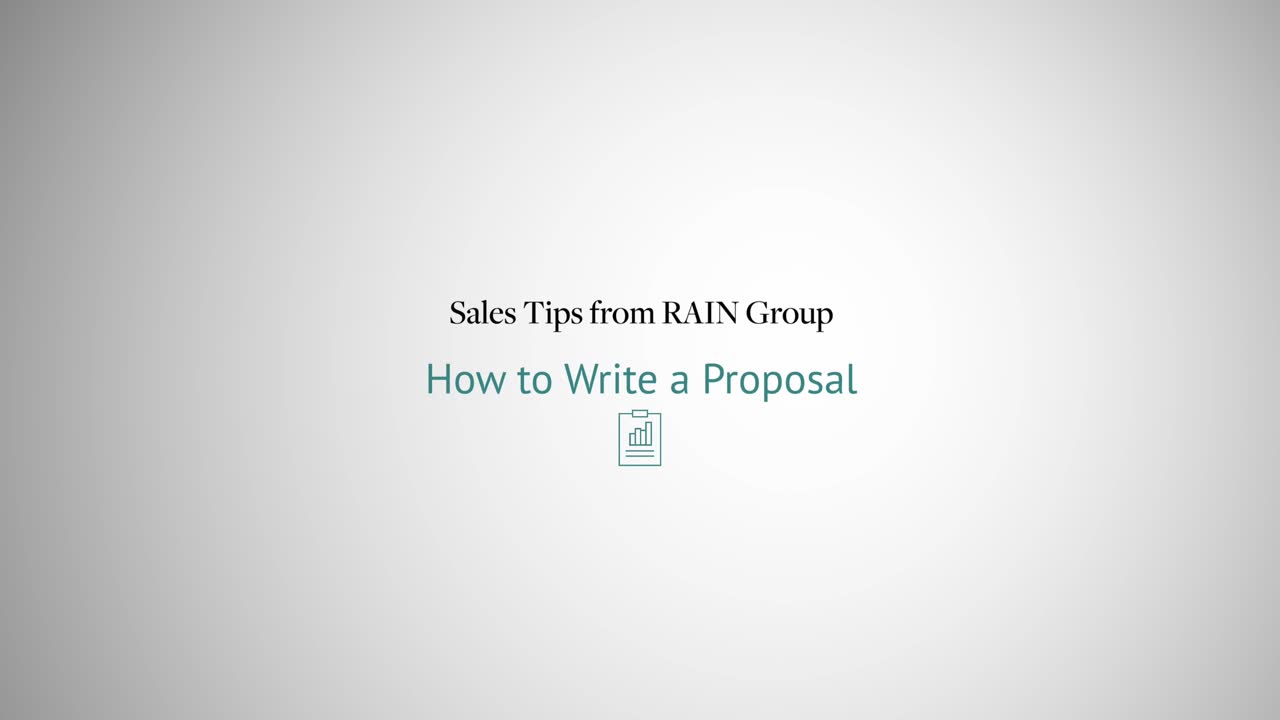"Can you send me a proposal?"
Sellers love to hear these six words from buyers. Once you submit a proposal, you can move forward to the win.
While a good proposal summarizes what you've already discussed and agreed to, a proposal is, at its core, a persuasive document that communicates to buyers why they should buy, and why they should buy from you.
8 Key Components of a Successful Sales Proposal
|
The Right Time to Write a Proposal
Let's assume you had an initial call with a buyer. You've uncovered need and they're impressed with your solution. At the end of the call they say, "This was great. Can you send me a proposal?" This might be what you want to hear, but if you know you need another hour or two to ask more questions and talk through different approaches, you can't jump the gun.
It's a big mistake to send a proposal prematurely. You have a better chance of winning the sale if you resist the temptation and instead request a second meeting. This allows you to get the information needed to craft the right solution and thus drive the greatest buyer value.
A proposal should be a summary of what you've already discussed, including:
- Your understanding of the buyer's needs
- Your approach to solving their needs
- Realistic expectations for what can be achieved
- Their willingness to commit to a decision in a specific time frame and invest the appropriate amount
- A compelling reason to buy—and buy from you
- What it will take in terms of time, money, and effort
If you haven't discussed each of these in full, you're writing a proposal too soon. Make sure you're on track by avoiding these common proposal mistakes.
How to Write a Proposal: 8 Key Components
A great proposal includes eight key sections. In this video, John Doerr, President of RAIN Group, reviews the importance of these components.

Depending on the situation, you may decide a specific proposal doesn't need to have all eight, but you should have a good reason if you choose to exclude one.
- Your Understanding of the Buyer's Needs
Begin your proposal by outlining your understanding of the buyer's needs. This can be in prose or bullets, but your goal is to demonstrate that you "get it." Do this by presenting the buyer's perspective and their current state, and reference conversations you've had in the past using words they've used to describe their challenges.
This reminds the buyer why they should take action and sets the table for what you and your solution will help them achieve.
- Current State and Future State
In a bulleted list, outline the buyer's current state (summarized from above) and contrast with their possible future state. What is the New Reality you will help the buyer achieve? How will you address each of their current needs?
This simple image should be extremely impactful for the buyer to see the difference of where they are versus where they could be (with your help).
- Your Solution
This is where you outline how your solution will get your buyer from where they are to where they want to be. Provide as much or as little detail as required based on the buyer’s persona and buying process. Include details in an appendix if needed.
This section should focus on how you'll get the buyer from their current state to the outlined New Reality.
- The Impact Case
Communicate the impact visually. Will your solution help them increase revenue, reduce costs, capture market share, increase productivity, etc.? As much as possible, quantify the impact for what you can achieve.
The best way to do this is to ask specific, impact-focused questions during your sales conversations. This will ensure you're equipped with the information you need to develop the impact case.
Download our guide, 50 Powerful Sales Questions, for specific questions you can ask to develop the impact case.
- Substantiation
Buyers must not only see your solution, but also believe it can work for them. The more you can substantiate your claims, the better chance you have of winning the sale.
In your proposals, include relevant case studies, industry experience, representative results, team experience (e.g., bios), etc. It helps to think of substantiation in three key areas:
- Your company: Show your company's track record and why your company is the right fit.
- Your people: Demonstrate how your team is the right team for them.
- Your offerings: Show how you will deliver on your promises and do it better than the competition.
Each of these should be addressed in your conversations first, then reinforced in your proposal.
- Investment Schedule
Provide pricing. You may choose to divide the project and fees into phases or provide different price/solution offerings. Often you can provide different options. If so, consider providing a best option, a better option, and a good option. If you do, do so in this order.
- Agreement
Always include a place for the buyer to sign. Sounds basic, but we've seen proposals without a signature page. Be sure to include any terms and conditions as well.
- Appendix
This is where you can include any core "about us" information for your company, along with accompanying details on your solutions.
Does every proposal need to include every section? No. At the end of a well-run sales process, it may be as simple as putting together a one-or two-page statement of work. If you're working with a repeat customer, it's very likely this is all you need. However, it's important to think about each of these sections, especially in competitive situations with new customers.
4 Questions Answered by Your Proposal
After reviewing your proposal, buyers should be able to answer the 4 Whys:
- Why Act? Communicate the value.
- Why Now? Communicate the urgency.
- Why Us? Communicate your differentiation.
- Why Trust? Communicate why it will work and that's it's worth the risk.
Submit a proposal at the right time and include the eight components above to put yourself in the best position to win the sale.






